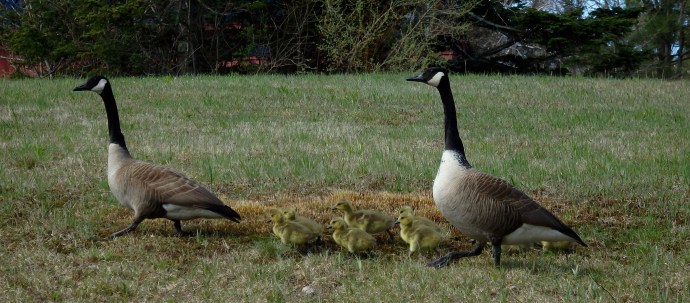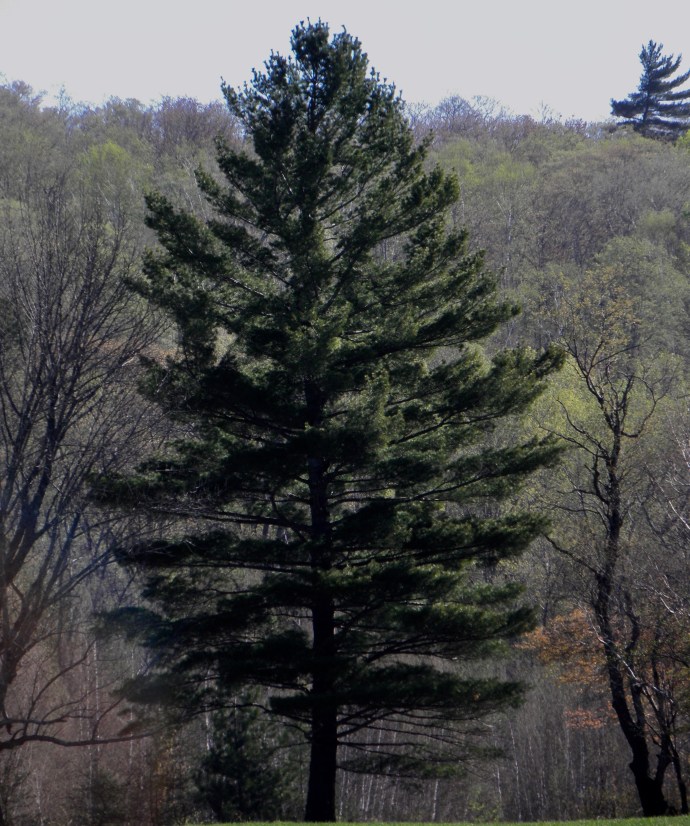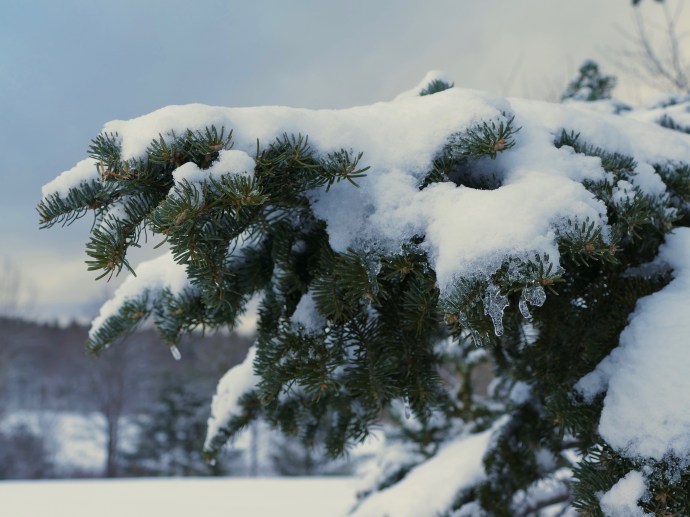
in Thoreau’s Journal:
The season advances by fits and starts; you would not believe that there could be so many degrees to it.


in Thoreau’s Journal:
The season advances by fits and starts; you would not believe that there could be so many degrees to it.

in Thoreau’s Journal:
The may-flower on the point of blossoming— I think I may say that it will blossom to-morrow. The blossoms of this plant are remarkably concealed beneath the leaves—perhaps for protection— It is singularly unpretending—not seeking to exhibit or display its simply beauty. It is the most delicate flower both to eye & to scent as yet— Its weather worn leaves do not adorn it. If it had fresh spring leaves it would be more famous & sought after.

in Thoreau’s Journal:
This bright reflecting water surface is seen plainly at a higher level than the distant pond— It has a singular but peasant effect on the beholder to see considerable sheets of water standing at different levels— Pleasant to see lakes like platters full of water.
in Thoreau’s Journal:

On Conantum Cliffs whose seams dip to the NW at an angle of 50º (?) and run NE and SW I find today for the first time the early saxifrage saxifrage vernalis in blossom—growing high and dry in the narrow seams where there is no soil for it but a little green moss.—following thus early after the bare rock—it is one of the first flowers not only in the spring of the year but in the spring of the world.—It can take advantage of a perpendicular cliff where the snow cannot lie & fronting the S….This is the place to look for early blossoms of the saxifrage—columbine—& plantain leaved everlasting—the 1st 2 especially— The crevices of the rock (cliff) make natural hot houses for them—affording dryness warmth & shelter. It is astonishing how soon & unexpectedly flowers appear.

in Thoreau’s Journal:

How pleasant in spring a still overcast warm day like this when the water is smooth!
in Thoreau’s Journal:
When the wind is still cool elsewhere, I glance up some warm southern slope, sunny and still, where the thinly scattered blades of green grass, lately sprung, already perchance begin to wave, and I am suddenly advertised that a new season has arrived.

This is the beginning of that season which, methinks, culminates with the buttercup and wild pink and Viola pedata. It begins when the first toad is heard.
in Thoreau’s Journal:
The larch will ap. blossom in 1 or 2 days at least both its low & broad purple coned male flowers & its purple tippled female cones––Its little leaf-bundles & beginning to burst.


in Thoreau’s Journal:
Saw my white-headed eagle again 1st at the same place the outlet of Fair Haven Pond. It was a fine sight— He is mainly––i.e. his wings & body––so black against the sky––& they contrast so strongly with his white head & tail.

He was first flying low over the water; then rose gradually & circled westward toward White Pond. Lying on the ground with my glass I could watch him very easily––& by turns he gave me all possible views of himself. When I observed him edgewise I noticed that the tips of his wings curved upward slightly the more like a stereotyped undulation. He rose very high at last––till I almost lost him in the clouds––circling or rather looping along westward high over river & woods & farm, effectually concealed in the sky.

We who live this plodding life here below never know how many eagles fly over us––

in Thoreau’s Journal:

When the outline & texture of white pine is thus seen against the water or the sky
it is an affecting sight.

in Thoreau’s Journal:
As we stand by the Mt on the Battleground––I see a white pine dimly in the horizon just north of Lee’s Hill––at 5 1/2 Pm, its upright stem & straight horizontal feathered branches––while at the same time I hear a robin sing. Each enhances the other.

That tree seems the emblem of my life––it stands for the west––the the wild.
The sight of it is grateful to me as to a bird whose perch it is to be at the end of a weary flight. I am not sure whether the music I hear is most in the robins’ song or in its boughs. The pine tree that stands on the verge of the clearing––whose boughs point westward. Which the villager does not permit to grow on the common or by the road side.–– In whose boughs the crow and the hawk have their nests.
in Thoreau’s Journal:
A very pleasant & warm afternoon––the earth seems to be waking up…
I find some advantage in describing the experience of a day on the day following. At this distance it is more ideal like the landscape seen with the head inverted or reflections in water…

Red maple in a warm place shows anthers & will open to-morrow if pleasant say 22nd.

in Thoreau’s Journal:

in Thoreau’s Journal:
The willow catkin might be the emblem of Spring. The buds of the lilack look ready to take advantage of the first warm day.
in Thoreau’s Journal:

The most interesting fact perhaps at present is these few tender yellow blossoms these half expanded sterile aments of the willow––seen through the rain & cold signs of the advancing year––pledges of the sun’s return. Anything so delicate both in structure in color & in fragrance contrasts strangely with surrounding nature & feeds the faith of man. The fields are acquiring a greenish tinge…
…As Cawley loved a garden, so I a forest. Observe all kinds of coincidences—as what kinds of birds come with what flowers.
in Thoreau’s Journal:

The scent of the earliest spring flowers! I smelt the willow catkins today. Tender––& innocent––after this rude winter––yet slightly sickening–– –– Yet full of vernal promise. The odor–– How unlike any thing that winter affords––or nature has afforded this 6 months! A mild sweet vernal scent–– Not highly spiced & intoxicating as some erelong––but attractive to bees–– That early yellow smell. The odor of spring––of life developing amid buds––of the earth’s epithalamium–– The first flowers are not the highest scented––as catkins––as the first birds are not the finest singers––as the black-birds & song sparrows &c. The beginnings of the year are humble. But though this fragrance is not rich––it contains & prophecies all others in it.

in Thoreau’s Journal:
The water on the meadows is now quite high––on account of the melting snow & the rain….Would it not be worth the while to describe the different states of our meadows which cover so large a portion of the town. It is not as if we had a few acres only of water surface––

From every side the milk-man rides over long causeways into the village —& carries the vision of much meadow’s surface with him into his dreams.–– They answer to moods of the Concord mind.–– There might be a chapter the Sudbury meadows––the humors of the town–– …I think our overflowing river––far handsomer & more abounding in soft and beautiful contrasts––than a merely broad river would be–– A succession of bays it is––a chain of lakes––an endlessly scalloped shore–– –– rounding wood & field––cultivated field & wood & pasture and house are brought into ever new & unexpected positions & relations to the water. There is just stream enough for a flow of thought––that is all. –– Many a foreigner who has come to this town has worked for years on its banks without discovering which way the river runs.
in Thoreau’s Journal:

Would it not be a fine office to preserve the vert of this forest in which I ramble?
in Thoreau’s Journal:

At this season of the year, we are continually expecting warmer weather than we have.

in Thoreau’s Journal:
If it were not for the snow it would be a remarkably pleasant as well as warm day…. Can we believe when beholding this landscape––with only a few buds visibly swolen—on the trees & the ground covered 8 inches deep with snow––that the grain was waving in the fields & the apple trees were in blossom April 19, 1775… The snow goes off fast for I hear it melting & the eaves dripping all night as well as all day.

in Thoreau’s Journal:
A driving snow storm in the night & still raging––5 or 6 inches deep on a level at 7 Am. All birds are turned into snow birds. Trees and houses have put on the aspect of winter. The travelers carriage wheels, the farmer’s wagon are converted into white disks of snow through which the spokes hardly appear. But it is good now to stay in the house & read & write. We do not now go wandering all abroad & dissipated––but the imprisoning storm condenses our thoughts–– My life is enriched– I love to hear the wind howl. I have a fancy for sitting with my book or paper––in some mean & apparently unfavorable place––in the kitchen for instance where the work is going on––rather a little cold than comfortable–– –– My thoughts are of more worth in such places than they would be in a well-furnished & warmed studio.
You must be logged in to post a comment.